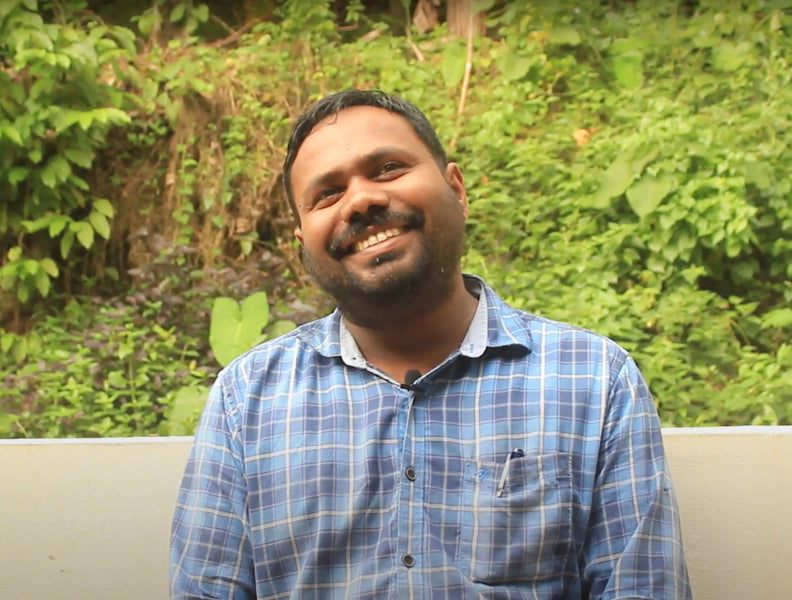Kerala
Mural
Kerala Mural Painting is an ancient art form indigenous to the southern state of Kerala, India, known for its intricate depictions of mythological and religious themes. These murals, often found on the walls of temples, churches, and palaces, are admired for their vibrant colors, rich symbolism, and fine detailing.
The style of Kerala mural painting is distinct, characterized by bold outlines, flat color palettes, and intricate detailing. The figures are often depicted with graceful postures, expressive eyes, and ornate jewelry, adding a sense of grandeur. The use of rich, vibrant colors like ochre, red, green, blue, and white enhances the visual appeal, creating a striking contrast between the figures and the background.
History and Tradition
Dating back to the 8th century AD, Kerala mural paintings evolved from temple art traditions. The classical period of this art form thrived during the 15th and 16th centuries under the patronage of the royal families and temple authorities. Over time, these paintings became deeply intertwined with the cultural and spiritual life of Kerala, serving as visual narratives of Hindu mythology and local legends. Kerala murals can be seen in places like Thirunadhikkara cave, Vaikom temple, Padmanabhaswamy temple etc.
Kerala murals primarily depict scenes from Hindu epics like the Ramayana, the Mahabharata, and Puranic texts. Common themes include stories of gods and goddesses such as Vishnu, Shiva, Krishna, and scenes of divine love, valor, and morality. These murals convey both spiritual and philosophical messages, making them integral to temple aesthetics and devotion.
Material and method
Kerala mural art is characterized by meticulous attention to detail, vibrant colors, and beautiful compositions. At first, artists prepare the wall with layers of lime and sand mixture. Natural pigments derived from minerals, plants, and metals, are used to draw outlines and later fill the colors, using brushes made from natural fibers. Artists skillfully incorporate architectural features such as pillars, arches, and doorways into their compositions, creating a sense of depth and dimensionality. The paintings are often adorned with decorative motifs and geometric patterns, adding to their visual appeal. V.M. Jijulal and Adarsh are some of the notable artists practicing this ancient art.
FAQs
What are Kerala mural paintings?
Kerala mural paintings are traditional wall paintings from the southern Indian state of Kerala. These artworks are typically found in temples, palaces, and churches and are known for their intricate detailing, vibrant colors, and large-scale depictions of Hindu mythology. The murals are created using natural pigments and are characterized by bold lines and expressive figures, reflecting a deep connection to the spiritual and cultural heritage of Kerala.
Can Kerala Mural Paintings be customized?
Yes, MeMeraki offers customization based on themes or specific deities. Please contact us for more information on custom orders.
What makes Kerala mural paintings unique?
Kerala mural paintings are unique for their use of natural pigments derived from minerals, plants, and organic sources, creating vivid and long-lasting colors. They also feature a distinctive style that emphasizes large, detailed figures, flowing lines, and harmonious compositions. The focus on intricate facial expressions and elaborate ornaments, combined with the use of a limited but vibrant color palette (primarily five colors known as Panchavarna), sets them apart from other mural traditions in India.
Do Kerala Mural Paintings have any religious significance?
Yes, Kerala Mural Paintings hold religious significance, as they were traditionally commissioned for temples and depict sacred stories and deities revered in Hinduism.
Where can Kerala mural paintings be found?
Kerala mural paintings are predominantly found in temples, palaces, and historical buildings throughout Kerala. Some of the most famous examples can be seen in temples like the Guruvayur Temple, Ettumanoor Mahadeva Temple, and the Padmanabhapuram Palace. Additionally, these murals can be found in certain Christian churches in Kerala, where biblical themes are depicted using the traditional mural style.
![]() Get Upto 10% OFF on purchase of this product.
Get Upto 10% OFF on purchase of this product.
![]() Get upto 10% OFF on Live Workshops when sign up for 2 or more workshops.
Get upto 10% OFF on Live Workshops when sign up for 2 or more workshops.
![]() Get 10% OFF coupon code for Art Kits signing up for Masterclass or Live Workshop.
Get 10% OFF coupon code for Art Kits signing up for Masterclass or Live Workshop.
![]() Earn upto 500 Points on purchase of this product.
Earn upto 500 Points on purchase of this product.





